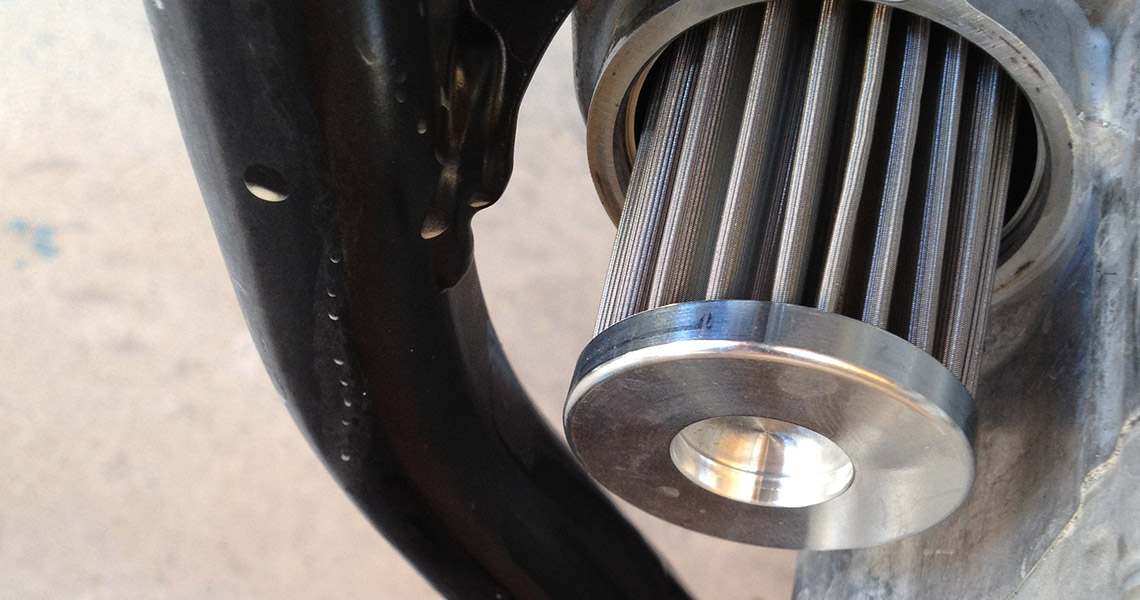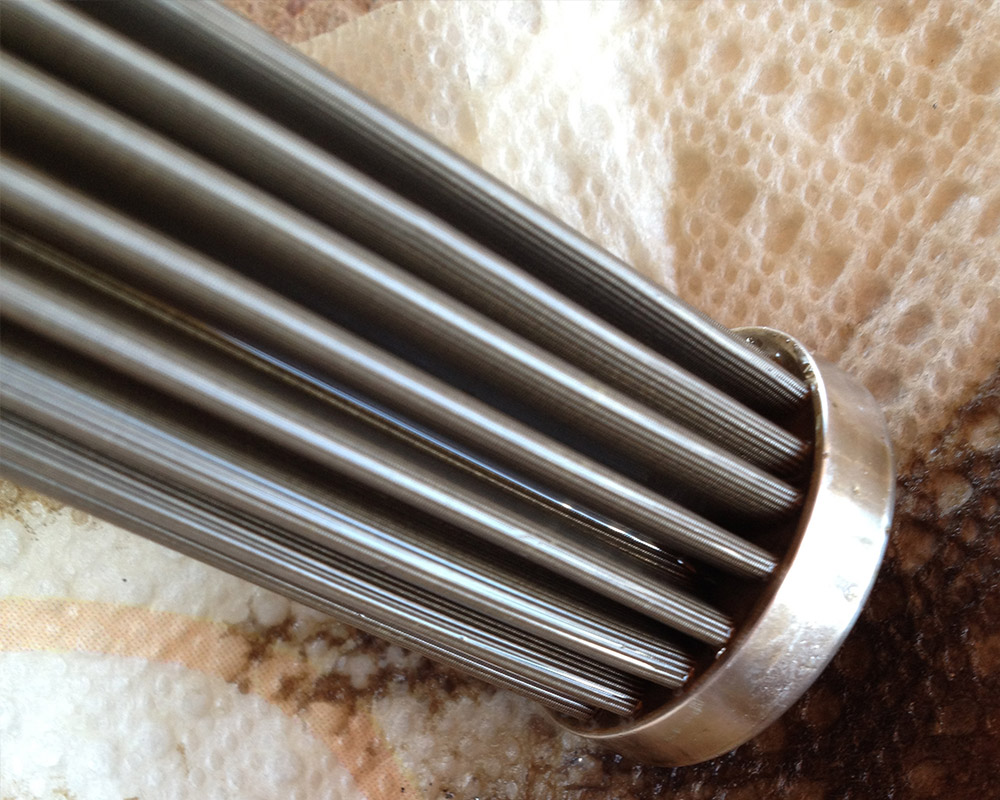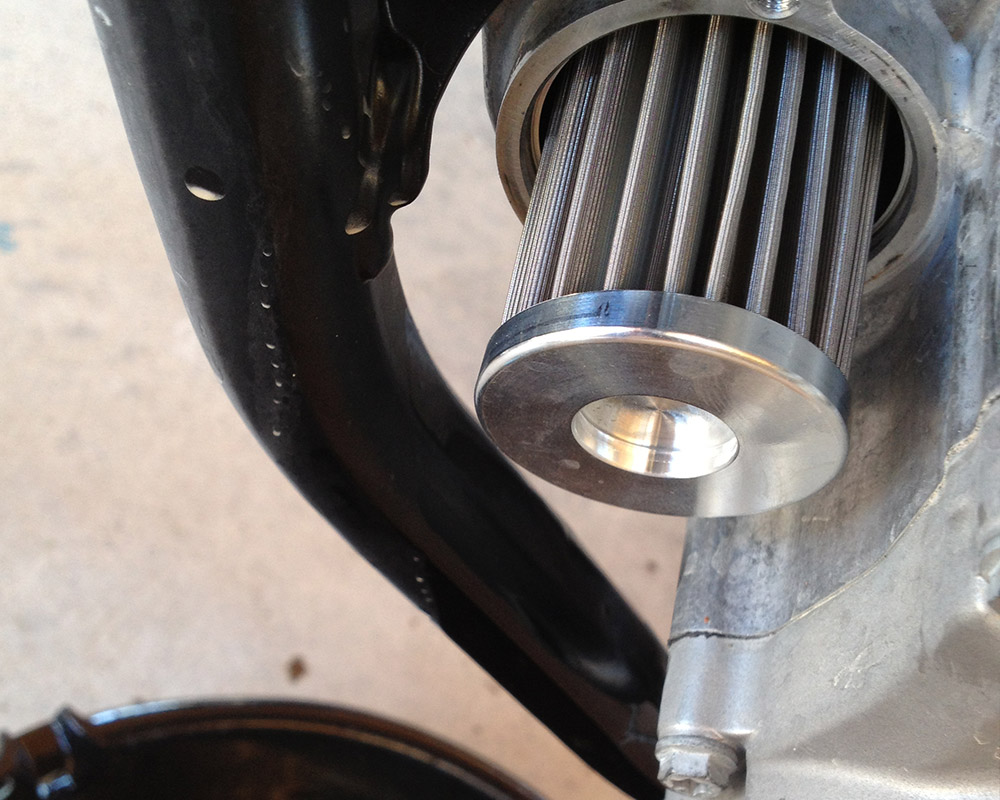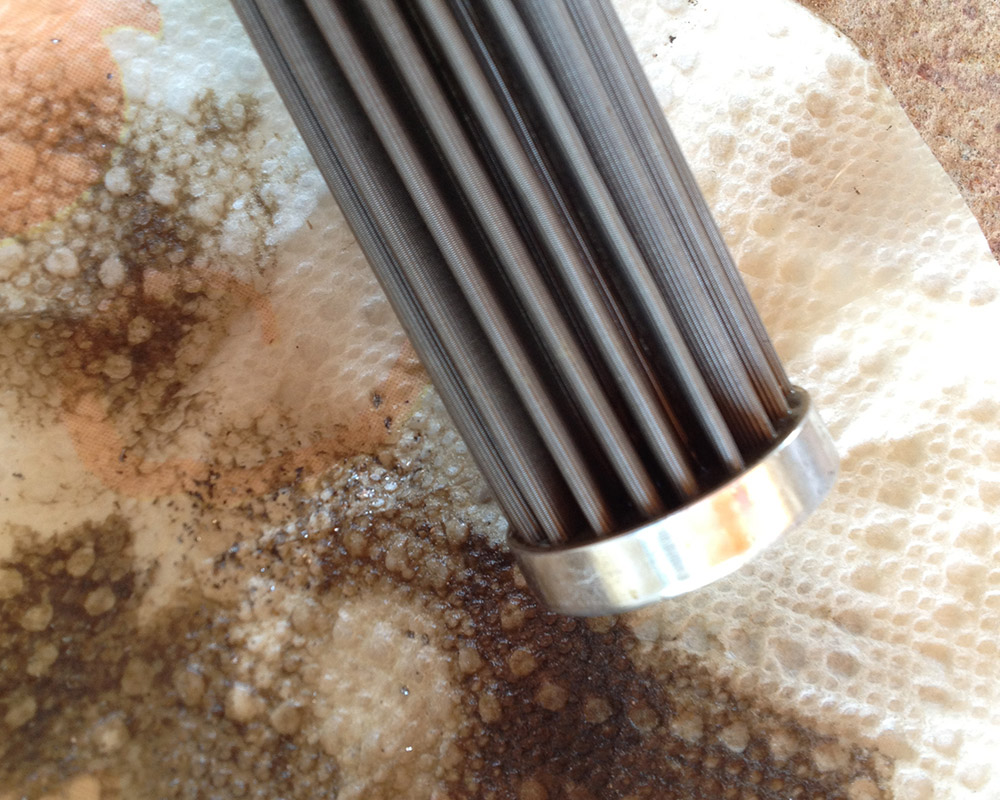Scotts Stainless Steel Oil Filter
Company: Scotts
Price: $69.95 to $89.95 for most
- A quality part at a fair price. Plus USA made!
- Instillation identical to stock.
- Easy to clean and see your engine’s health.
- No bling factor at the track or trail
- Initial price hit compared to other offerings.
What it is
- Scotts’ Stainless Steel Oil Filter is a made in the USA
- It works just like any other oil filter as far as most riders are concerned
Scotts’ Stainless Steel Oil Filter is a made in the USA reusable oil filter for your four-stroke motorcycle. It is made from machined aluminum ends with a three pleat welded seam on the laser cut, medical grade, 304 stainless steel micronic filter cloth screen membrane that filters down to 35 microns. A one inch square of this micron filter material will flow 1.9 gallons of 90 weight oil per minute at only one psi pump pressure (at 70 degrees F). The filter is a direct replacement for the standard paper filter found in most motorcycles and can be reused an unlimited number of times. The price is dependent on the bike bust most motorcycle filters are $69.95 and available for just about any motorcycle made
How it works
It works just like any other oil filter as far as most riders are concerned because we don’t really think about how valuable a good oil filter is until there is an issue. The Scotts’ installed exactly like a stock filter on the many bikes we tested them on (KTM 400 RFS, KTM 530 EXC, KTM 500 EXC, Husaberg 570, Honda CRF 450X) and until you pull it out at an oil change you don’t know it is there. But your engine might. A typical paper filter can pass particles in the range of 50-100 microns depending on the quality of the paper media, for comparison. Particles of fine sand are near 60 microns for example. The Scotts has passed ASTMF316 test for 35 microns and is certified through "Bubble Point" testing. Many will tell you to stay away from these types of tests for determining real-world oil filter performance. Just think of a long slender pole shaped particle going through a small hole straight on and then not going through it sideways. Enough science and laboratory, here is what we found. The filter filters just like any other filter and caught plenty of debris on both brand new engines as well as older ones in service for a long time. When oil change time came I typically took the filter out, let the oil drain off of it, then rinsed it off with contact cleaner finishing from the inside out. I did this over a blue shop paper towel and examined the debris each time. And almost every time there were specks of aluminum, clutch material, gasket or silicone pieces and sometimes small metal flakes (but those are usually found on the drainplug magnet). But on brand new bikes, and bikes fresh off a rebuild or internal parts replacement there was typically a bit more.
Now to really see if there was a difference I compared what I could rinse off a standard paper filter taking a non-scientific note of the size and quantity of the partials. Then I installed the Scotts filter in the same bike and checked the filter at the next oil change and there was a larger quantity of smaller particles. Now one thing that paper filters don’t do is clean off and release particles so it is comparing apples and oranges but to check my results I ran the same bike through another typical oil service cycle and repeated the oil filter wash. There was notably less of the small particles from the stainless steel filter’s screen rinse. I was satisfied that the stainless filter was doing a very good job, like most properly functioning filters will. Filters are a great health indicator and seeing what you can rinse off the filter makes diagnosing an engine’s health or condition an easier operation. Plus the oil filter is the first place to look if you suspect something is going wrong.
The real advantages of the Scotts filter are simple. If you ride a lot and change the oil and filter frequently, the filter is a cost savings over time. Savings begins between 5-10 oil changes if you are using average quality paper filters. Especially considering it is one less thing to have on hand. And then there is the build quality of the filter. It is claimed to stand up to 600 degrees F which is way more than what other parts of your engine can handle. I’ve seen some cheap screen filters glue fail (and not even from excessive heat, some didn’t like the cleaners). Additionally if you ever have coolant or water get into your engine’s oil, paper filters tend to plug. Screen will still flow.
At first glance the price can seem steep (especially compared to lower quality paper or even screen filters available) but value and durability always come with a price.
For more info go to: www.scottsonline.com
Leave a Reply







5 Responses to “Scotts Stainless Steel Oil Filter”
Camilo Santana
can we define the “typical paper filter” referenced when it’s said that, “A typical paper filter can pass particles in the range of 50-100 microns depending on the quality of the paper media”?
i’m not seeing anything on the net comparing scott filters to any name brand paper filter like purolator, mobile 1, wix or otherwise.
Jimmy Lewis
Typical means just that. Or average.
Jimmy Lewis
You point is valid and in a lot of instances the claims are all most of us less scientific can go on as we lack the specific testing tools to do evaluation to this level in a laboratory. Yet we have years of practical experience in real world environments using many different products. Oil filters a plenty. This test reflects that and on many points explains this. The real value in the Scotts filter is the longevity and durability of the filter and the ease of which it is cleaned. It filters as necessary and in years of use has never caused or contributed to any engine failures and we have been using them on a fleet of rental bikes as proof. Positive tests all read like fluff pieces.
Jimmy Lewis
There in lies the difference in the Scotts’ one we tested here and some others we have also used.
I used a Honda XR400 that we abused as well as a fleet of Rental KTM RFS bikes in this testing over the years. There were a few of the stainless filters that came unglued. I never experienced an O-ring failure on any in the engine but some really died when left out of the bike and they dried up.
Jimmy Lewis
Your comments make perfect scene. In the pain of cleaning something that you usually throw in the trash I find out the health of my engine by what washed out (or hopefully not.)